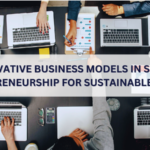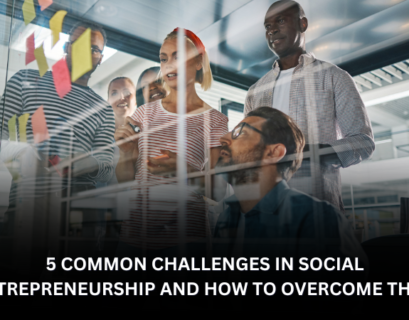Social entrepreneurship has evolved into a global movement where businesses are created not only for profit but also to address social and environmental issues. To achieve this dual goal, entrepreneurs must adopt innovative business models that allow for both financial sustainability and lasting social impact. These models are crucial in ensuring the longevity and effectiveness of a social enterprise.
What is a Social Entrepreneurship Business Model?
A business model in social entrepreneurship refers to the strategy a social enterprise uses to generate revenue while achieving its social or environmental goals. Unlike traditional businesses that focus solely on maximizing profits, social enterprises prioritize their mission and integrate it into their financial strategies. This creates a unique challenge, as social entrepreneurs must design models that can sustain both financial growth and social impact.
The Hybrid Model
One of the most common approaches in social entrepreneurship is the hybrid model. This business model combines elements of traditional for-profit and non-profit structures. Typically, the enterprise generates revenue through a business activity while using profits to fund social programs or reinvest into scaling impact. For example, TOMS Shoes operates under this model by selling footwear and using part of the proceeds to provide shoes to children in need.
The hybrid model allows social entrepreneurs to scale operations more easily since revenue is generated from product sales. However, it also requires a delicate balance between maintaining profitability and fulfilling the social mission. Careful planning and financial management are critical to the success of hybrid enterprises.
Social Franchising
Social franchising is another innovative model that allows social entrepreneurs to scale their impact by replicating their business in different regions. This model works similarly to traditional franchising but focuses on maintaining social impact across all locations. The founder creates a successful enterprise and then licenses its business model, brand, and operations to other entrepreneurs who want to replicate the impact in their communities.
This approach has proven successful in sectors like healthcare and education. For example, the Aravind Eye Care System in India uses a franchising model to provide affordable eye care to millions of people while maintaining high standards of quality. Social franchising not only helps scale impact but also creates opportunities for local entrepreneurs to contribute to social change.
Cross-Subsidization Model
The cross-subsidization model is designed to make products or services more accessible to underserved populations while generating income from other market segments. In this model, a social enterprise charges higher prices to wealthier customers and uses the profits to subsidize products or services for low-income or disadvantaged groups. This approach is particularly useful in sectors like healthcare, education, and utilities.
A notable example of cross-subsidization is the Grameen Bank in Bangladesh, which provides microloans to the poor. The bank charges slightly higher interest rates to borrowers with more financial stability, allowing it to offer affordable loans to those in extreme poverty. The cross-subsidization model allows social enterprises to remain financially viable while serving their target communities.
Pay-What-You-Can Model
The pay-what-you-can model offers flexibility to consumers, allowing them to pay according to their financial means. This model is often used in restaurants, healthcare clinics, and education services, where individuals can access products or services regardless of their ability to pay full price. This approach fosters inclusivity and ensures that the social enterprise reaches its target population.
One prominent example of this model is the Panera Cares Community Cafes, which allowed customers to pay what they could afford for their meals. Although Panera Cares is no longer operational, it demonstrated how businesses could use innovative models to serve diverse socioeconomic groups.
Subscription and Membership Models
Subscription-based models are becoming increasingly popular in social entrepreneurship, especially in industries like renewable energy, education, and health. In these models, customers pay a regular fee to access products or services, providing the social enterprise with a steady revenue stream. This approach ensures financial sustainability while offering value to customers.
For example, Solar Sister, an organization that empowers women in Africa by training them to become clean energy entrepreneurs, uses a subscription model. Customers subscribe to solar energy products, enabling Solar Sister to expand its reach and improve the lives of people in off-grid areas.
Conclusion
Innovative business models are at the heart of successful social enterprises. By combining financial sustainability with a clear social mission, entrepreneurs can create lasting change while ensuring their enterprise thrives. Whether adopting a hybrid model, social franchising, or cross-subsidization, the key is finding the right balance between profit and purpose. Social entrepreneurs who harness these models are well-positioned to drive meaningful impact while building sustainable businesses.










